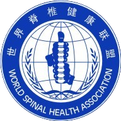[New Friends] Click the blue text “World Spine Health Alliance” below the title to quickly follow
[Old Friends] Click the share button in the upper right corner to follow the public WeChat account worldspine
[More Information] Open the World Spine Alliance public platform and click the upper right corner to view historical records
The Root of All Illness: Blood Stasis Syndrome
In life, it is inevitable to have bumps and bruises, such as hitting a chair or being struck by an object. The same incident can result in different symptoms for different people; some may develop bruises while others do not. Is the tendency to bruise easily a sign of a scar constitution?
Bruising easily is not necessarily a scar constitution. A scar constitution refers to a condition where wounds do not heal easily or leave scars after healing. However, bruising, which seems like a minor symptom, should not be taken lightly.
This is an early manifestation of blood stasis in our body. For example, common conditions like cerebral infarction, coronary heart disease, pulmonary embolism, and lower limb arterial embolism are all closely related to blood stasis. Additionally, conditions such as liver cirrhosis, liver cancer, gastric cancer, and breast cancer in women are also associated with blood stasis!
Since blood stasis can lead to so many serious diseases, how can we determine if there is blood stasis in our body?
The simplest method is to observe the sublingual veins. If the color of the sublingual veins is dark and there are bruises, it indicates the presence of blood stasis in the body.
Symptoms and Manifestations of Blood Stasis
In addition, there are other symptoms that also indicate blood stasis.
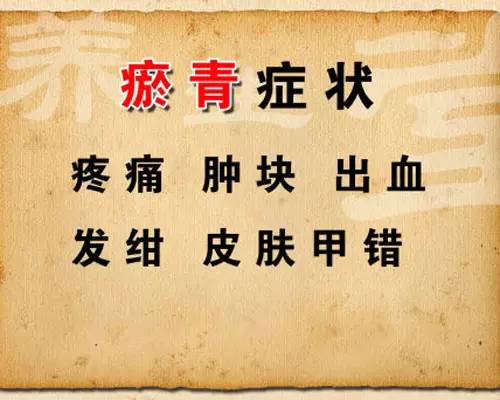
Pain caused by blood stasis is mostly characterized by stabbing, cramping, or dull pain, especially pain that feels like being pricked by needles. The pain is often fixed in one or several locations, such as headaches, chest pain, stomach pain, abdominal pain, pain in the precordial area, and pain in the hypochondriac region. Pain may worsen on rainy days, in cold seasons, or at night, and in severe cases, one may feel a large lump in the hypochondriac area.
Cyanosis refers to a bluish or dark color. This is a typical symptom of blood stasis, such as dark-colored lips, face, nails, and tongue, or the appearance of cyanosis. “Panda eyes” or prominent veins are common, with large, twisted veins resembling earthworms on the abdomen, lower limbs, or scrotum. In severe cases, they may appear as sac-like expansions. Additionally, without any external injury, the complexion may appear dark or even black, with black spots appearing on a previously fair face. For example, the butterfly spots in women and age spots in the elderly are manifestations of blood stasis in the body.
The skin on other parts of the body may no longer be smooth and moist but instead become rough, dry, and itchy, even resembling snake skin, which is also a manifestation of blood stasis.
There are many causes of blood stasis, including emotional factors, dysfunction of internal organs, and external pathogens. However, from a pathological perspective, it can be divided into deficiency syndrome and excess syndrome. Clinically, qi deficiency with blood stasis is the most common.
What are the manifestations of Qi Deficiency with Blood Stasis?
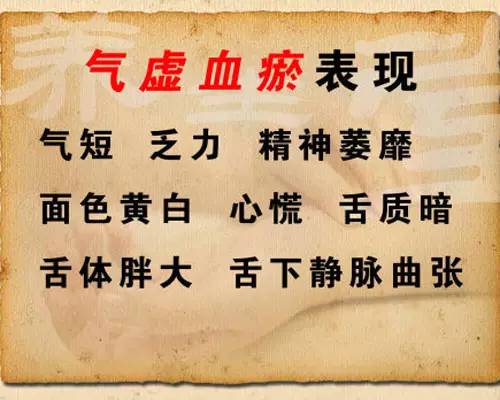
When you experience symptoms of qi deficiency with blood stasis, it is important to invigorate the blood while also tonifying qi. Which herbs can achieve both effects?
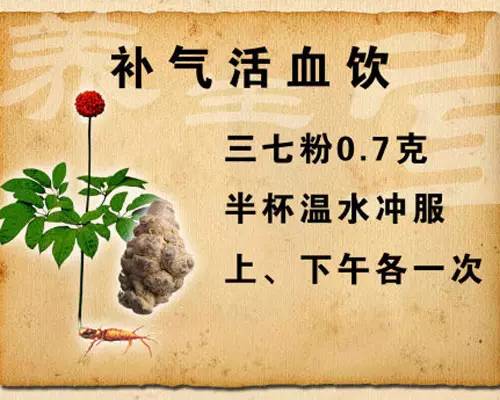
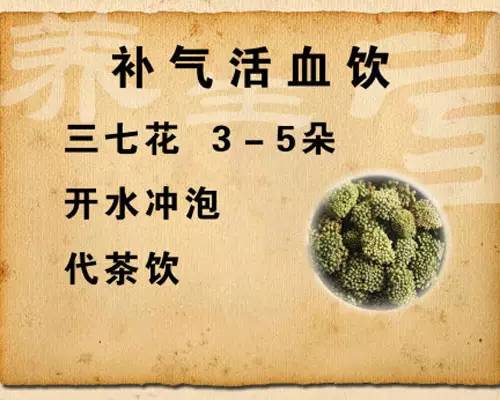
Blood stasis is the root of all diseases and is ubiquitous, while qi stagnation with blood stasis is a relatively common type of blood stasis syndrome. Traditional Chinese Medicine (TCM) states that qi is the commander of blood; when qi stagnates, blood coagulates. This means that when our qi encounters obstacles, blood circulation is also impaired, leading to blood stasis.
Qi stagnation type blood stasis can lead to some very serious diseases, such as tumors (cancer), myocardial infarction, and breast hyperplasia. So, how can we determine if our blood stasis is due to qi stagnation?
The most common cause is emotional distress, which disrupts the liver’s ability to regulate qi, leading to qi stagnation and blood stasis. Therefore, patients with qi stagnation and blood stasis often exhibit symptoms of emotional distress, such as irritability, depression, and sighing. Additionally, those with qi stagnation and blood stasis often experience pain in the liver and spleen areas, primarily characterized by distending pain, sometimes radiating pain.
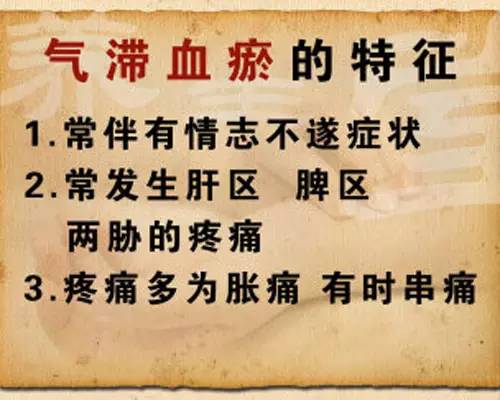
Lumps are also a common feature in patients with blood stasis. Experts particularly remind us that lumps can be classified into true and false accumulations, which can be understood as real lumps and pseudo-lumps. Each type has its characteristics and is related to different diseases, so we need to be cautious when encountering false lumps.
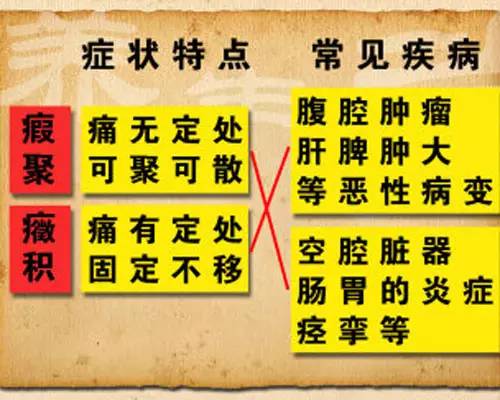
For qi stagnation with blood stasis, dietary therapy can be beneficial—such as the use of Tao Hong Si Wu Dan (Peach Blossom and Four Substances Decoction). When taking Tao Hong Si Wu Dan, vinegar can be added for better results in promoting qi and invigorating blood circulation.
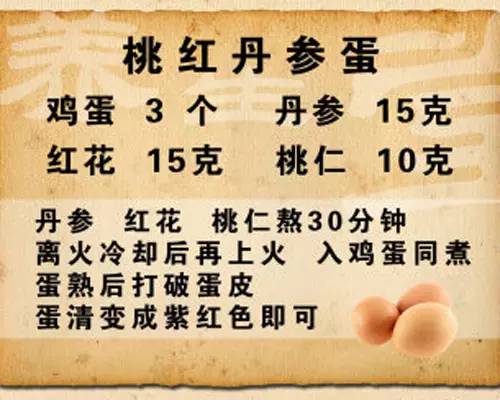
The Occurrence of Tendon Diseases
The “Lingshu” (Spiritual Pivot) states that tendon diseases can occur due to:
1. Cold causes the tendons to contract and become stiff; heat causes the tendons to relax and not contract.
2. Due to liver disease.
3. The primary cause is external injury.
The Formation of Tendon Diseases
(This discussion focuses on external injuries that cause this disease): Once the tendons are injured, the damaged area will become thin and torn, commonly referred to as muscle strain. At this time, qi and blood will also stagnate. If the injured tendons do not heal, they will contract and form knots, which clinical research refers to as tendon knots. The formation of tendon knots marks the beginning of chronic disease. Non-injury-related tendon diseases also exhibit the above signs.
The Explanation of Tendon Knots:
Tendon knots are generated from injured tendons and consist of two layers: the inner layer is the injured part, and the outer layer is the normal fascia. Tendon knots are a product of the body’s self-protection against pain. After tendon injury, it is like a rope or rubber band that is about to break; it can no longer withstand the required force. To prevent the rope from breaking, a knot is tied at the breaking point, allowing it to be reused, albeit at a shorter length. For tendons, we cannot tie a knot to protect the injured area and accommodate bodily movements. Just as tying a knot in a rope shortens it, tendon knots will also shorten the tendons, and these knots will grow larger over time. Although a person’s height does not change, the tendons become shorter, leading to an internal retraction force in the tendons, making conditions like lower back and leg pain difficult to treat, primarily due to the treatment of tendon knots. When tendon knots are untreated, patients do not feel pain.
“Prominent Veins” refer to visible subcutaneous veins in the body. Experts believe that regardless of which part of the body has prominent veins, it reflects the accumulation of phlegm, dampness, rashes, toxins, etc. People should learn to observe and understand their discomforts and seek medical attention early.
Generally, the prominent veins can be observed mainly on the face, head, and feet. Prominent veins are also veins that return blood to the heart. When the return of venous blood is obstructed and pressure increases, prominent veins often appear on the surface of the body, reflecting conditions such as bulging, varicosity, and discoloration.
Why is the return of blood obstructed?
In fact, it is caused by internal accumulation. Various forms of blood stasis, phlegm-dampness, heat toxins, and accumulated waste cannot be expelled from the body, leading to dysfunction in various systems. At this time, prominent veins on the face, abdomen, and especially on the palms and backs of the hands become very noticeable. Therefore, prominent veins indicate internal accumulation.
If there is excessive cholesterol, blood lipids, and accumulation, and blood viscosity is high, it can lead to circulatory disorders, easily causing high blood lipids, high blood sugar, and high blood pressure, which are cardiovascular diseases. If the meridians are obstructed by phlegm, dampness, stasis, heat, toxins, and accumulation, it will exacerbate inflammatory responses, leading to pain and worsening symptoms.
If there are waste products, toxins, bacteria, mucus, and fecal matter accumulating in the gastrointestinal tract, it can lead to toxicity, resulting in various black spots, white spots, blood moles, and in severe cases, tumors and cancer.
Accumulation of Waste is the Root of All Illness
Scientific dissections have shown that cancer and aging are caused by blood stasis and the accumulation of waste, so accumulation is the root of all diseases. Therefore, the “Huangdi Neijing” (Yellow Emperor’s Inner Canon) states: “The meridians are the pathways of life and death, regulating deficiency and excess; they must not be obstructed.”
Based on clinical experience, the following symptoms may indicate the presence of accumulation:
(1) Difficulty in defecation, with black, sticky stools that take a long time to pass, requiring excessive use of toilet paper.
(2) Poor appetite, food not tasting good, dry mouth, and thick tongue coating.
(3) Easily fatigued, prone to colds, and recurrent colds.
(4) Shortness of breath, fatigue, poor spirit, unclear mind, and insomnia with vivid dreams.
(5) Bruising or spots appearing easily after massage, cupping, tapping, or gua sha.
(6) Prone to skin allergies, skin pigmentation, and the appearance of age spots, freckles, melasma, white spots, and blood moles.
(7) Feeling cold when eating cold food and feeling hot when eating hot food; those who do not respond to tonics.
(8) Long-term mental and physical labor, work stress, and emotional depression.
(9) Frequently feeling low-grade fever.
Individuals with the above symptoms are mostly in a sub-healthy state. The more of the above nine symptoms present, the deeper the degree of internal accumulation, indicating a state of illness. In severe cases, tumors may develop, and serious diseases may arise.
Therefore, the appearance of prominent veins on the body indicates excessive internal waste accumulation, reflecting the accumulation of phlegm, dampness, heat, and toxins. As the saying goes: “Prominent veins over the bridge of the nose indicate trouble ahead.” The more waste accumulates in the body, the more prominent the veins become. Generally, if one does not have a bowel movement for several days, the veins become particularly prominent, and the state of internal accumulation can be observed through the shape of the veins.
Generally, changes in the shape and color of the prominent veins indicate the severity of internal waste accumulation, known as toxicity from prolonged accumulation. If the veins become bulging, twisted, and dark purple, it often indicates that the internal accumulated waste is more toxic, even suggesting that serious illness may be imminent. Therefore, the appearance of prominent veins in any part of the body indicates corresponding issues represented by that area.
Distribution of Prominent Veins:
(1) Prominent Veins on the Hands
Children with accumulation often have prominent veins on the bridge of the nose, but after the age of three, they often appear on the hands. Therefore, the more metabolic waste in adults, the more prominent veins appear on the hands. The appearance of prominent veins in a specific area indicates corresponding internal organ accumulation.
1. Prominent Veins on the Back of the Hand
Prominent veins on the back of the hand often indicate accumulation in the lower back, leading to fatigue, lower back pain, and even muscle tension and nodules.
2. Prominent Veins on the Fingers
Prominent veins on children’s fingers often indicate gastrointestinal accumulation and poor digestion. In adults, prominent veins on the fingers not only indicate digestive system issues but also reflect microcirculation disorders in the head, insufficient blood supply to the brain, discomfort in the head, and in severe cases, dizziness, headaches, and strokes.
3. Prominent Veins on the Palm
(1) Prominent veins on the thenar eminence often indicate lower back pain and lower limb rheumatism.
(2) Prominent veins on the wrist crease often indicate gynecological diseases, such as menstrual irregularities and leukorrhea.
(3) Prominent veins on the Neiguan point often indicate heart-related diseases, such as myocardial fatigue, palpitations, and insomnia with vivid dreams.
(4) The closer the prominent veins are to the Neiguan point, the earlier heart symptoms may occur; the more bulging, twisted, and dark purple the veins are, the more severe the heart disease. It may even indicate that a serious heart condition is imminent.
(5) Prominent veins near the life line are often seen in individuals with liver and gallbladder metabolic issues, leading to symptoms such as bitter mouth, dry mouth, irritability, and chest tightness.
(6) Prominent veins at the base of the thumb are often seen in women before and after menstruation, indicating breast tenderness.
(7) Prominent veins on the horizontal lines of the index finger often indicate left shoulder periarthritis. Prominent veins on the horizontal lines of the little finger often indicate right shoulder periarthritis.
(8) Prominent veins on the horizontal lines of the thumb joint indicate coronary artery sclerosis. If dark purple, it indicates a heart attack.
(9) Prominent veins on the horizontal lines of the middle finger joint indicate cerebral artery sclerosis.
(10) Prominent veins on the fingers, even visible between the finger joints, indicate gastrointestinal accumulation and habitual constipation or tumors, hemorrhoids, etc. Changing bowel habits will gradually lighten and eliminate the prominent veins.
(11) Prominent veins all over the palm indicate gastrointestinal accumulation, high blood lipids, high blood viscosity, high blood pressure, high acidity, low oxygen content, and easy blood coagulation and accumulation, leading to dizziness, headaches, fatigue, and weakness.
(12) Prominent veins on the shoulders often indicate shoulder periarthritis, which is particularly difficult to treat.
(2) Prominent Veins on the Head
1. When prominent veins appear on the temples, it often indicates dizziness and headaches; when prominent veins are bulging and twisted, it indicates cerebral artery sclerosis; if dark purple, it indicates a high risk of stroke.
2. Prominent veins on the forehead often indicate long-term mental and physical labor, stress, or emotional pressure.
3. Prominent veins on the bridge of the nose often indicate gastrointestinal accumulation, leading to stomach pain, abdominal distension, poor digestion, and difficulty in defecation; if purple, the situation is more serious.
4. Prominent veins under the eyes often indicate spleen deficiency, leading to dark circles, and kidney deficiency, leading to dark bags under the eyes. Prominent veins under the eyes often indicate gynecological diseases, menstrual irregularities, and leukorrhea.
5. Prominent veins at the corners of the mouth often indicate gynecological diseases, heavy leukorrhea, fatigue, and lower back pain.
6. Prominent veins under the chin correspond to the coronary arteries of the heart, which can easily lead to heart disease and myocardial fatigue. If the veins are bulging, twisted, and dark, it indicates a high risk of coronary heart disease.
(3) Prominent Veins on the Chest and Abdomen
1. Prominent veins on the chest and abdomen often indicate breast hyperplasia, breast tenderness, and emotional depression.
2. Prominent veins on the abdomen, as the saying goes, “prominent veins over the belly” indicate more serious accumulation; in adults, it may indicate liver cirrhosis, ascites, or late-stage tumors. Prominent veins on the abdomen often indicate difficult-to-treat diseases.
(4) Prominent Veins on the Lower Limbs
1. Prominent veins on the knees indicate joint swelling and rheumatic arthritis.
2. Prominent veins on the calves, especially in severe cases of varicose veins, often lead to lower back and leg diseases, and rheumatic joint pain. This is particularly common among teachers who stand for long periods, farmers who walk a lot, or those who like to take hot showers after exercise. Cold can injure the tendons, which is a common issue that many people overlook in daily life, ultimately leading to chronic diseases and making it difficult to lower high blood pressure.
In summary, the appearance of prominent veins anywhere on the body not only affects aesthetic appearance but is more importantly a reflection of the accumulation of waste in the body. The key to clearing prominent veins is to learn to detoxify the intestines. Detoxifying the intestines is different from simply having regular bowel movements; many people mistakenly believe that having daily bowel movements is sufficient and overlook the need for detoxification. This is akin to regularly cleaning toilets, descaling kettles, or removing carbon buildup from cars. The best methods for detoxifying the intestines and eliminating prominent veins are to regularly use tapping and gua sha therapy.
Prominent veins on the temples indicate signs of cerebral artery sclerosis, headaches, and stroke;
Prominent veins on the forehead may indicate hyperthyroidism or diabetes;
Prominent veins on the bridge of the nose indicate gastrointestinal accumulation and poor digestion;
Prominent veins under the jaw indicate rheumatism or lower limb diseases;
Black prominent veins on the back of the fingers indicate cervical spondylosis or lumbar disease;
Prominent veins at the finger joints indicate poor gastrointestinal function, abdominal pain, and bad breath;
Prominent veins at the base of the thumb indicate coronary artery sclerosis and myocardial fatigue.
Observing veins to understand diseases should also be based on individual circumstances; some men naturally have larger blood vessels; some people engaged in heavy physical labor will have more prominent veins than average; some people will have varying degrees of prominent veins after drinking alcohol or exercising. Therefore, it is unnecessary to panic upon seeing prominent veins; rather, one should pay attention to the condition of their veins over time, and if any changes occur, they should take extra care.
[Author’s Introduction]
Lu Weixing, male, chief physician, professor, doctoral supervisor, currently serves as the deputy director of the Cardiology Department at Dongzhimen Hospital of Beijing University of Chinese Medicine and the chairman of the Cardiovascular Disease Professional Committee of the Beijing Association of Integrative Medicine. He specializes in interventional treatment of coronary heart disease, implantation of permanent cardiac pacemakers, cardiovascular pharmacology, and the integrative treatment of cardiovascular diseases.
This article is excerpted from Beijing TV’s “Health Hall”


